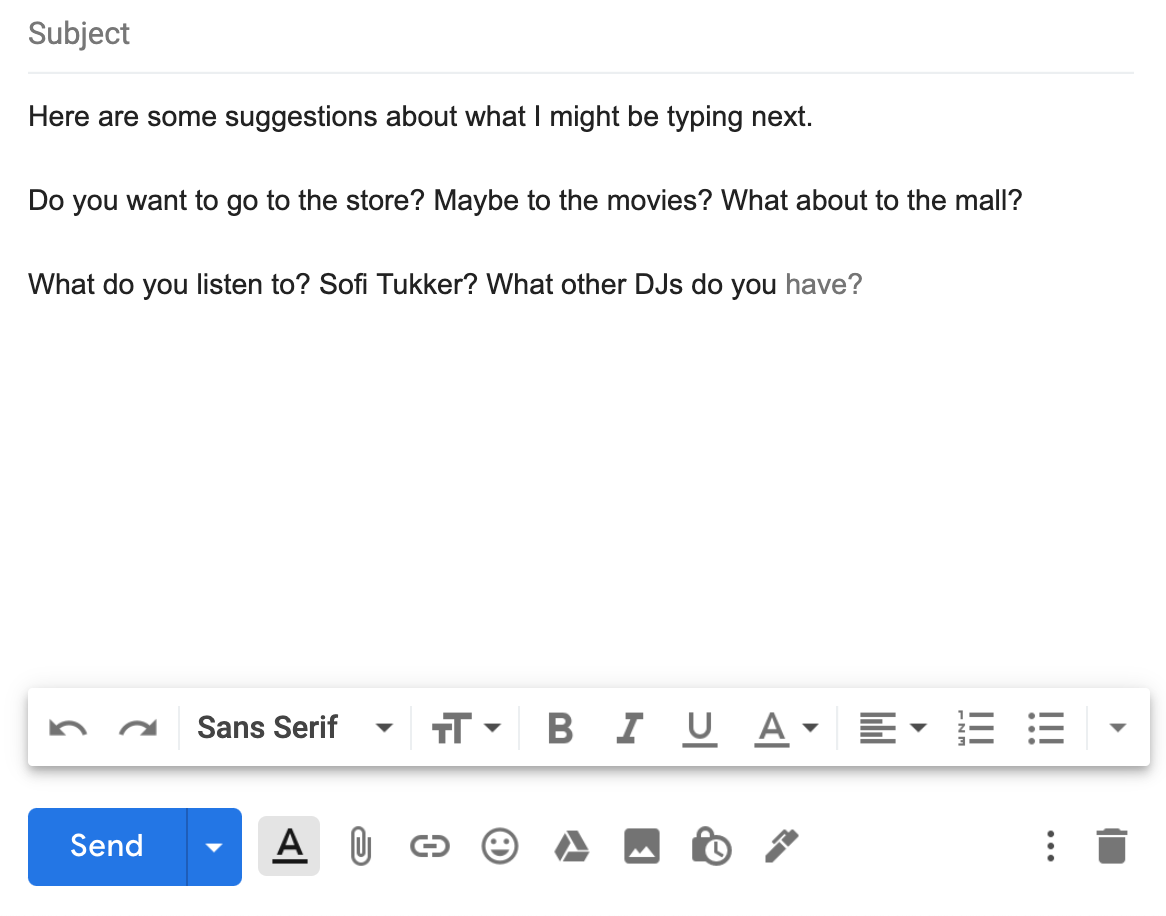Repersonalizing Digital Communications: Against Standardizing and Interfering Mediations
Back in 2013 I wrote a blog post reacting to Cristina Vanko’s project to handwrite her text messages for one week. At the time, I focused on how Cristina introduced slowness into a digital communication that often operates as a conversation due to the immediacy and frequency of responses. Since 2013, texting has grown more popular and instant messaging has woven its way into our work environments as well. Reinvoking that slowness stays relevant, but careful notification settings can help recapture it as well.
What I want to focus on is the way that her project repersonalizes the digital medium of communication, adding her handwriting and therefore more of her personality into the messages that she sends. I thought of this project again while watching a talk from Jonathan Zong for the Before and Beyond Typography Online Conference. In his talk, he points out that “writing is a form of identity representation”, with handwriting being “highly individualized and expressive”, while “in contrast, digital writing makes everyone’s writing look the same. People’s communications are filtered through the standardized letterforms of a font.”
His project that he discusses in part of that talk, Biometric Sans, “elongates letterforms in response to the typing speed of the individual”, thus providing another way to reembody personality into digitally-mediated communications. He describes the font as “a gesture toward the reembodiment of typography, the reintroduction of the hand in digital writing.” It’s an explicit repersonalization of a digitally-mediated communication, in much the same way Cristina Vanko chose to handwrite her text messages to do the same. Both projects seek to repersonalize, and thereby rehumanize, the somewhat coldly standardized digital communication formats that we rely on.
Without resorting to larger projects, we find other ways to repersonalize our digital communications: sharing stickers (I’m rather fond of Rejoinders), crafting new expressions (lol) and words, and even sending voice responses (at times accidentally) in text messages. In this way we can poke at the boundaries of the digital communication methods sanitized by standardized fonts for all users.
While Jonathan stayed rather focused on the typography mediation of digital communication due to the topic of the conference, I want to expand this notion of repersonalizing the digital communication methods. Fonts are not the only mechanism by which digital communications can be mediated and standardized—the tools that we use to create the text displayed by the fonts do just as much (if not more).
The tools that mediate and standardize our text in other ways are, of course, automatic correction, predictive text, and the software keyboards themselves.
Apple is frustratingly subtle about automatic correction (autocorrect), oftentimes changing a perfectly legitimate word that you’ve typed into a word with a completely different meaning. It’s likely that autocorrect is attempting to “accelerate” your communications by guessing what you’re trying to type. This guess, mediating your input to alter the output, often interferes with your desired meaning. When this interfering mediation fails (which is often), you’re instead slowed down, forced to identify that your intended input has been unintentionally transformed, fix it, perhaps fix it again, and only then send your message.
Google, meanwhile, more often preemptively mediates your text. Predictive text in Google Mail “helps” you by suggesting commonly-typed words or responses.
This is another form of interference (in my mind), distracting you from what you’re actually trying to communicate and instead inserting you into a conflict with the software, fighting a standardized communication suggestion while you seek to express your point (and your personality) with a clear communication. Often, it can be distractingly bland or comical.
 In Google Mail, this focus on standardized predictive responses also further perpetuates the notion of email as a “task to be completed” rather than an opportunity to interact, communicate, or share something of yourself with someone else.
In Google Mail, this focus on standardized predictive responses also further perpetuates the notion of email as a “task to be completed” rather than an opportunity to interact, communicate, or share something of yourself with someone else.
Software keyboards themselves also serve to mediate and effectively standardize digital communications. For me personally, I dislike software keyboards because I’m unable to touchtype on them (Frustrated, I tweeted about this in January). Lacking any hardware feedback or orientation, I frequently have to stare at the keyboard while I’m typing. I’m less able to focus on what I’m trying to say because I’m busy focusing on how to literally type it. This forced slowness, introducing a max speed at which you can communicate your thoughts, effectively forces you to rely on software-enabled shortcuts such as autocorrect, predictive text, or actual programmed shortcuts (such as replacing “omw” with “On my way!”), rather than being able to write or type at the speed of your thoughts (or close to it). Because of this limitation, I often choose to write out more abstract considerations or ideas longhand, or reluctantly open my computer, so that I have the privilege of a direct input-to-output translation without any or extensive software mediation.
In a talk last June at the SF Public Library, Tom Mullaney discussed the mediation of software keyboards in depth, pointing out that software keyboards (or IMEs as he referred to them) do not serve as mechanical interpreters of what we type, but rather use input methods to transcribe text, and that those input methods can adapt to be more efficient. He used the term “hypography” to talk about the practice of writing when your input does not directly match the output. For example, when you use a programmed shortcut like omw, but also when you seek to type a character that isn’t represented on a key, such as ö, or if you’re typing in a language that uses a non-latin alphabet, a specific sequence of keystrokes to represent a fully-formed character in written text. Your input maps to an output, rather than the output matching the input.
These inputs are often standardized, allowing you to learn the shortcuts over time and serving the purpose of accelerating your communications, but in the case of autocorrect or predictive text, they’re frequently suffering from new iterations—new words or phrases that interferingly mediate and change a slip up into a skip up, encourage you to respond to an email with a bland “Great, thanks!” or attempt to anticipate the entire rest of your sentence after you’ve only written a few words. Because I also have a German keyboard configured, my predictive text will occasionally “correct” an English typo into a German word, or overcapitalize generic English nouns by mistakenly applying German language rules.
All of these interfering and distracting mediations that accelerate and decelerate our digital communications, alongside our ongoing efforts to repersonalize those communications, has me wondering: What do we lose when our digital communications are accelerated by expectations of instantaneous responses? What do we lose when they’re decelerated by interfering mediations of autocorrect? What do we lose when our communications are standardized by fonts, predictive text, and suggested responses?
